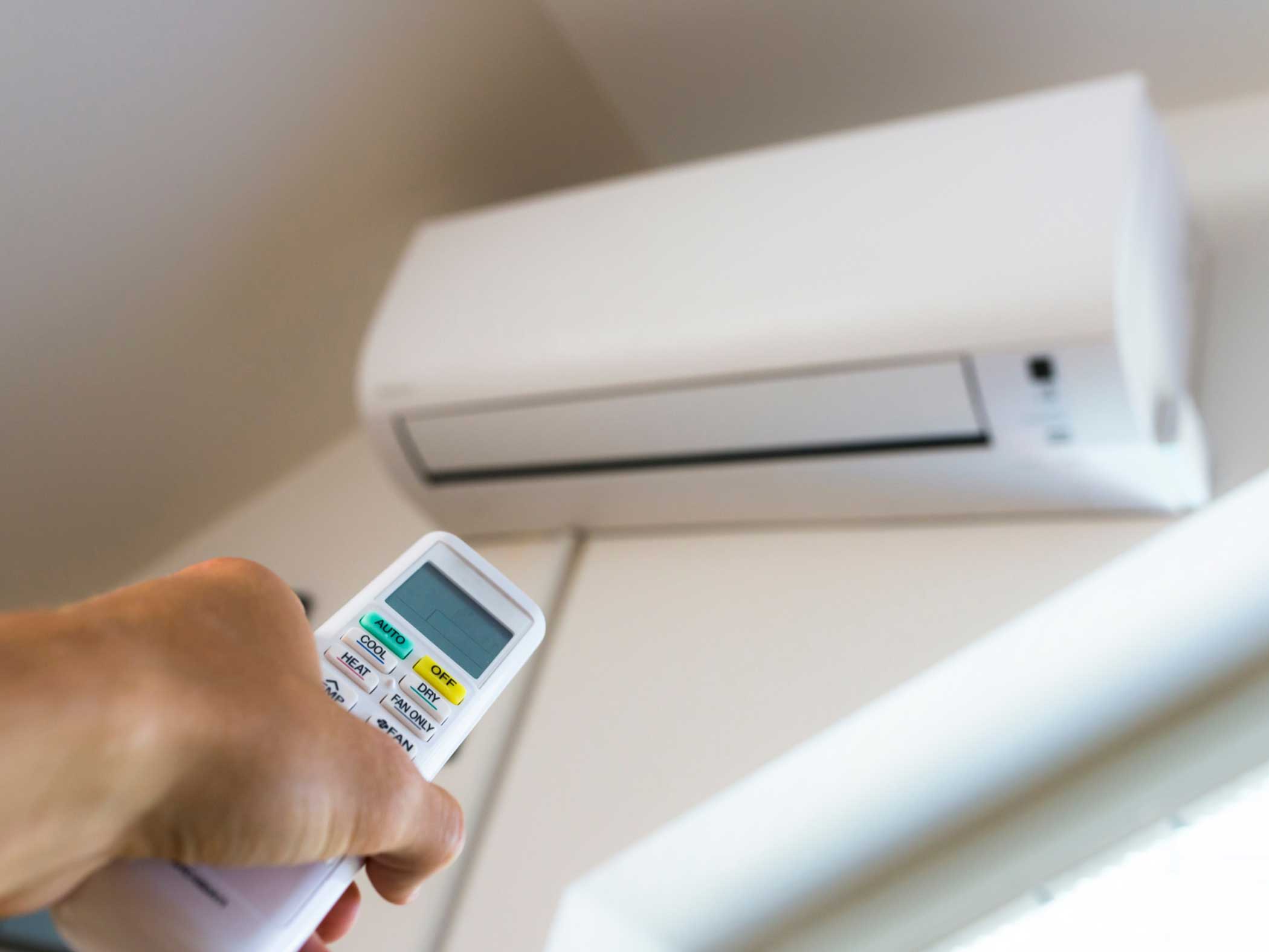Mini Split Heat Pumps: Ductless Heating and Cooling
No ductwork? No problem. Mini split heat pumps provide an efficient alternative to conventional heating and cooling.

Mini split heat pumps provide energy-efficient heating and cooling without ductwork. They're a cost-effective replacement for inefficient baseboard electric heating and window air conditioners in older homes and multifamily buildings. These ductless systems are also a good choice for any application where installing ductwork is expensive or not feasible, and to improve poorly heated or cooled rooms.
How they work
Mini split systems have an outdoor unit and indoor air handlers. A conduit which contains a power cable, refrigerant tubing and a condensate drain connect the outdoor unit with the air handlers inside.
Refrigerant flows constantly through the tubing. In winter, the refrigerant absorbs heat from the outside air and brings it inside as it evaporates into a gas. Heat is transferred from the refrigerant to indoor air as it condenses back into a liquid. In summer, this process is reversed as the heat pump provides cooling by pulling heat from the indoor air and transferring it outdoors.
Mini split models have as many as four indoor air-handling units connected to one outdoor unit. The number depends on how much heating and cooling is needed in the area of the home. Each air-handling unit comes with its own thermostat, providing individual control for specific rooms or zones.
Benefits of mini split systems
For many applications, mini split heat pumps provide a number of important advantages over central air conditioning systems, as well as window or wall units:
- Energy savings. Mini splits have no ducts. Ductwork is responsible for up to 30% of heating and cooling losses in central air systems, according to the U.S. Department of Energy, especially if the ducts are in an unconditioned space.
- Reliable heating and cooling. Like other heat pumps, mini split systems can deliver energy-efficient heating and cooling. In colder climates, a backup heating system may be required.
- Ease of installation. Mini splits are easier to install than other types of space-conditioning systems. Typically, hookup between indoor and outdoor units only requires a small hole in the wall and connecting conduits are available in a variety of lengths.
- Design flexibility. Indoor air handlers can be suspended from the ceiling, mounted into a drop ceiling or hung on a wall. Floor-standing units are also available, and many models come with remote controls to make turning the system on and off more convenient.
Mini split systems typically cost more to install than other heating and cooling systems, although lower operating costs and financial incentives can provide a faster return on investment. Also, look for units that are ENERGY STAR®-certified for energy-efficient performance.